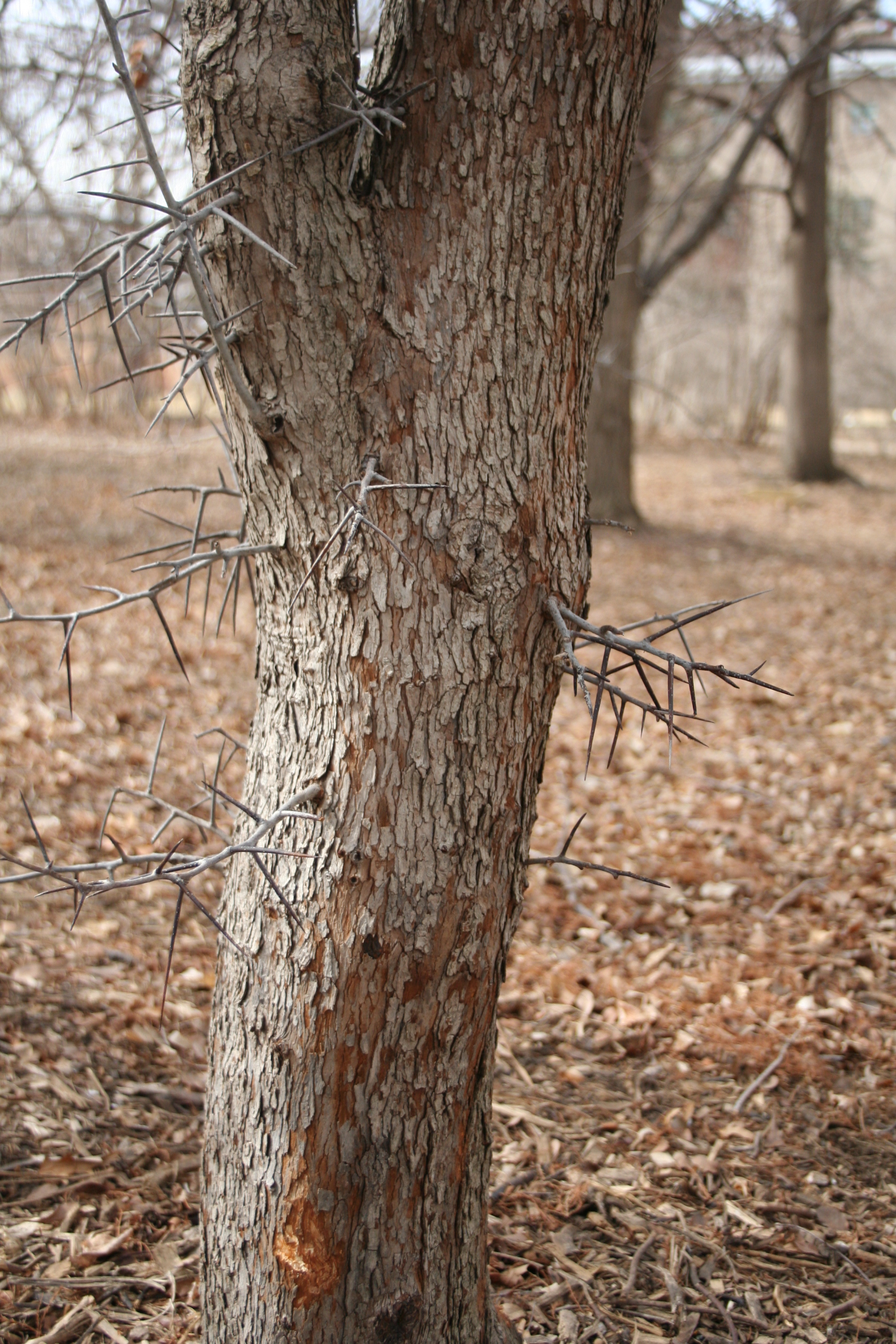Hawthorn, Cockspur
Crataegus crusgalli , Deciduous
The hawthorns are a diverse and confusing group of plants with at least 200 distinct species occurring throughout the Northern Hemisphere. There are dozens of species native to North America, including several that are grown as landscape trees.

Size at Maturity
| Height | Crown Spread |
| 15-30' | 10-25' |
Tree Characteristics
It is flat-topped, horizontally layered small tree with glossy, small oval leaves that can turn a brilliant bronze-red in the fall. It produces relatively large fruit (1/2” across) that can fall in great abundance in good years.
Wildlife Benefits
Hawthorns are especially important trees for wildlife as their fruit is eaten by many birds, and their tangle of thorny branches often provides good cover to birds seeking shelter.
Additional Considerations
The species is highly susceptible to cedar-hawthorn rust, causing significant deformities with leaves and fruits in wet years and when planted near cedar trees.
Interesting Facts
Crusgalli is Latin in origin and means “leg of a cock” in reference to the thorns of the tree that resemble a rooster's spurs.